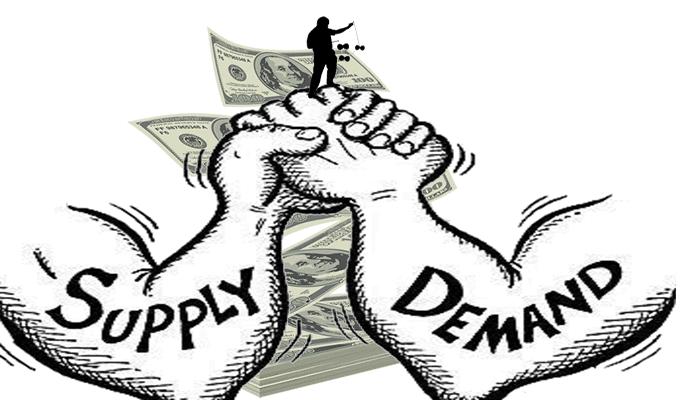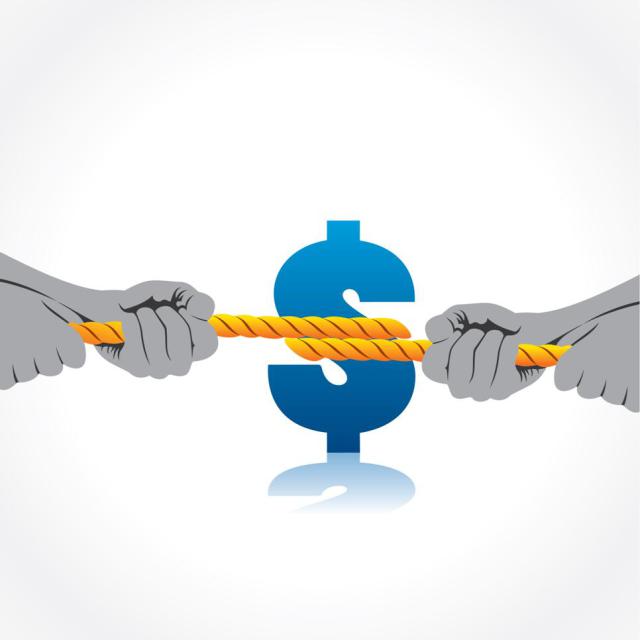Determinants of Demand
Demand in economics may be defined as the consumers’ willingness and ability to purchase certain goods or items. Moreover, the determinants of demand can practically go a long way in explaining the demand for particular goods. Economic demand depends on a number of different factors. For example, an increase in the price of goods will lead to a decrease in the quantity that may be demanded by consumers. Similarly, a decrease in the cost or selling price of goods will most likely lead to an increase in the demanded quantity of the goods. So, price is an important factor of demand, as there are very few consumers that don’t care about money. What determines the demand for a product in the economy? Let us learn the determinants of demand, demand elasticity, determinants of demand and supply, and non-price determinants in a market.
What are the Determinants of Demand
The determinant of demand states that when price changes, the quantity demanded will change. Below are the determinants of the demand.
#1. Income of the consumer:
When an individual’s income rises, they can buy more expensive products or purchase the products they usually buy in a greater volume. As a result, this causes an increase in demand. On the other hand, if incomes fall, then demand is likely to decrease. Furthermore, products that suffer a fall in demand while incomes rise are referred to as ‘inferior goods’. Although this does not necessarily indicate lower quality, rather the product’s performance on the market generates a negative demand curve.
#2. Consumer confidence:
Consumers’ observation of the economic conditions affects their tendency to consume. For instance, if consumers are confident their jobs are secure, they are likely to spend more. However, if consumer confidence is low, individuals are more likely to put their money into savings accounts – especially if interest rates are high.
#3. Number of Buyers:
One of the most important determinants of demand is the size of the market. The more consumers want to purchase a product, the faster demand will rise. Although a rise in population is an obvious way demand will rise faster.
#4. Price of similar goods:
The laws of supply and demand indicate that if the cost of a particular product rises, demand will decrease. For example, if the price of crude oil goes up, the cost of petrol will rise in gas stations. Therefore, depending on the income of the consumer, they will drive less to conserve gas. Equally, a change in price can cause demand for a related product to change. For instance, if we reflect again on the price of crude oil, other products associated with gasoline might rise in price. For example, the cost of train travel may rise as a result of more consumers opting to travel by rail. However, when the price of petrol falls, more people will return to the roads, thus, triggering a drop in the price of train tickets.
#5. The expectation of the future:
If consumers suspect that the price of a product will rise in the future, the demand for the said product will increase in the present. For example, if there is a forecast of a rise in petrol prices for the coming week, motorists will fill up today. Equally, customers’ attitudes, tastes, and preferences can impact demand in ways less directly associated with cost. For instance, if a popular celebrity is marketing a product, the demand may increase for that product. Conversely, if a scientific study reports a product is detrimental to your health, demand will drop.
Determinants of Demand Elasticity
Elasticity is a general measure of the responsiveness of an economic variable in response to a change in another economic variable. Economists utilize elasticity to gauge how variables affect each other. The three major forms of elasticity are price elasticity of demand, cross-price elasticity of demand, and income elasticity of demand. Apart from the price, there are several other factors that influence the elasticity of demand. Below are the determinants of demand elasticity.
#1. The Consumer Income:
The income of the consumer also affects the elasticity of demand. For high-income earners, the demand is said to be less elastic as the rise or fall in the price will not have much effect on the demand for a product. Moreover, in the case of the low-income earners, the demand is said to be elastic and a rise and fall in the price have a significant effect on the quantity demanded. Such as when the price falls the demand increases and vice-versa.
#2. Amount of Money Spent:
The elasticity of demand for a product is determined by the proportion of income spent by the individual on that product. In the case of certain goods, such as matchboxes, salt a consumer spends a very small amount of his income on these goods, so even if their prices rise the demand for these products will not be affected to a great extent. Thus, the demand for such products is inelastic.
Moreover, foods and clothing are the items where an individual spends a major proportion of his income and therefore if there is any change in the price of these items, the demand will get affected.
#3.Nature of Commodity:
The elasticity of demand also depends on the nature of the commodity. These products can be grouped as luxury, convenience, necessary goods. The demand for the necessities of life, such as food and clothing is inelastic as their demand cannot be postponed. The demand for Comfort Goods is neither elastic nor inelastic. As with the rise and fall in their prices, the demand decreases or increases moderately.
However, the demand for luxury goods is said to be highly elastic because even with a slight change in its price the demand changes significantly. But, however, the demand for prestige goods is said to be inelastic, because people are ready to buy these commodities at any price, such as antiques, gems, stones, etc.
#4. Uses of the Commodity:
The elasticity of demand also depends on the number of uses of the commodity. Such as, if the commodity functions for a single purpose, then the change in the price will affect the demand for the commodity only in that use, and thus the demand for that commodity is said to be inelastic. Whereas, if the product has several uses, such as raw material coal, iron, steel, etc., then the change in their price will affect the demand for these commodities in its many uses. Thus, the demand for such products is said to be elastic.
#5. If the Demand is Postponable or not:
If the demand for a particular product cannot be postponed then, the demand is said to be inelastic. Such as, Wheat is important in our daily life and hence its demand cannot be postponed. On the other hand, the items whose demands is postponable are said to have elastic demand. Such as the demand for furniture can be postponed until the time its prices fall.
#6. Existence of Substitutes:
Substitutes are goods that can replace one another. The goods which have close substitutes are said to have elastic demand. Such as, tea and coffee are close substitutes and if the price of tea increases, then people will switch to coffee, and demand for the tea will decrease significantly. On the other hand, if there are no close substitutes for a product, then its demand is said to be inelastic. Such as salt and sugar do not have their close substitutes and hence lower is their price elasticity.
#7. Joint Demand:
The elasticity of demand also depends on the complementary goods, the goods which cannot function without the other. Such as cars and petrol, pen and ink, etc. Here the elasticity of demand of supporting commodity depends on the elasticity of demand of the major commodity. Such as, if the demand for the pen is inelastic, then the demand for the ink will also be less elastic.
#8. Range of Prices:
The price range in which the commodities lie also affects the elasticity of demand. Such as the higher range products are usually bought by rich people, and they do not care much about the change in the price and hence the demand for such higher range commodities is said to be inelastic.
Also, the lower range commodities have inelastic demand because they consist of low prices and can be bought by any section of society. But the commodities in middle-range prices are said to have an elastic demand because with the fall in the prices the middle class and the lower middle class are prompted to buy that commodity and therefore the demand increases. However, if the prices are increased the consumption reduces, and as a result demand decreases.
Thus, these are some of the important determinants of elasticity of demand that every firm should understand properly before deciding on the price of their offerings.
Determinants of Demand and Supply

Supply is a schedule that shows the various quantities businesses are willing and able to offer for sale at various prices at a given period of time.
Demand is a schedule that shows the various quantities that consumers are willing and able to buy at various prices at a given period of time.
Demand Determinants
Changes in any of the following will either increase (shift right) or decrease (shift left) the demand curve:
#1. Tastes, preferences, and/or popularity
#2. Number of buyers
#3. Income of consumers
#4. Price of a substitute good
#5. Price of complementary goods
#6. Expectations of future prices of goods
Supply Determinants
Changes in any of the following will either increase (shift right) or decrease (shift left) the supply curve:
#1. Prices of resources/inputs/factors or raw materials
#2. Technology
#3. Taxes and Subsidies
#4. Price expectations
#5. Number of sellers in the market
Non Price Determinants of Demand
Non-price Determinants of Demand are said to be to the factors other than the current price that can possibly affect the demand of a service or product and consequently, result in a shift in its demand curve. In other words, these factors are very significant economically as they can influence the demand for a service or product, regardless of its current price.
Various research proves that price is not the only variable that can affect demand. Demand is also affected by a number of other non-price factors, often called underlying determinants – these factors include.
#1. The needs of the consumer
If there is a need for particular goods or services, and the consumer earns a sufficient income, those particular goods are likely to be in demand irrespective of their price. The greater the need for a product, the greater the demand. For example, college students are more likely to need academic textbooks than retired people. Some needs, such as the need for food, are common while other needs are specific to the individual, such as the need for particular medicines.
#2. Consumer income
When considering the impact of income on demand, economists differentiate between normal and inferior goods. Generally, for normal goods, the higher the income of a consumer the greater the quantity demanded. However, with inferior goods, an increase in income will lead to a reduction in demand. For example, individuals on very low incomes are less likely to demand new motor cars, and more likely to take the bus. However, if they obtain higher income, demand for public transport may fall, while the demand for private transport is likely to rise. In this case, private transport is a normal good and public transport an inferior one.
#3. Consumer tastes, preferences and fashions
Tastes can change over time, as can preferences and fashions, and demand can increase or decrease to reflect these changes. For example, cigarette smoking is reducing in today’s trend than it was before.
#4. Habit
Some products, like alcohol, gambling, and cigarettes, are addictive. The stronger the addiction, the greater the demand. Addiction to a product may interfere with rational decision-making as individuals forgo their own self-interest.
#5. Brand loyalty
Consumers may become loyal to particular brands, and this can have a significant influence on how consumers allocate their income. Brands give consumers confidence and take some of the risks out of purchasing.
#6. The price of substitute products
Changes in the price of substitutes can greatly affect demand. An increase in the price of a close substitute will result in an increase in the demand for a product, as consumers switch from the substitute. For example, an increase in the price of one brand of sugar is likely to result in an increase in demand for a substitute brand.
#7. The price of complementary products
Many products have complements, which are either bought at the same time as the product or are needed to make the product work. For example, batteries are a complement to many portable electronic products. As the price of complements rises, the demand for a product is likely to fall. A situation where complementary products are bought at the same time is referred to as joint demand.
#8. Natural factors
The impact of good or bad weather and other natural factors can have a considerable impact on demand. Certain products are highly dependent on weather or natural conditions, such as the demand for ice cream, raincoats, and holidays.
#9. Expectations
Consumer expectations can influence the demand for many items. This is especially true with expensive and luxurious items, including the demand for housing, motor cars, and expensive consumer electronics products.
#10. Knowledge
Knowledge, or ignorance, can affect the pattern of consumer demand. If rational consumer knows that a product is harmful or beneficial to them they may reduce or increase their demand accordingly. Knowing that information and ignorance affect consumer demand, producers may attempt to encourage consumption through positive and persuasive advertising.
#11. The impact of advertising
Successful advertising can have a considerable influence on consumer demand. Advertising can increase consumer awareness of a product and encourage consumption.
What Are the 5 Determinants of Demand?
The quantity demanded (QD) is a function of five factors—price, buyer income, the price of related goods, consumer tastes, and any consumer expectations of future supply and price. As these factors change, so too does the quantity demanded.
What Are the Factors Influencing Demand?
6 Important Factors That Influence the Demand of Goods
- Tastes and Preferences of the Consumers: ADVERTISEMENTS: …
- Income of the People: …
- Changes in Prices of the Related Goods: …
- Advertisement Expenditure: …
- The Number of Consumers in the Market: …
- Consumers’ Expectations with Regard to Future Prices:
What Is Meant by Demand?
Demand is an economic principle referring to a consumer’s desire to purchase goods and services and willingness to pay a price for a specific good or service. … Market demand is the total quantity demanded across all consumers in a market for a given good.
Conclusion
Economists usually emphasize that price is an important factor in the determination of demand for a service or product in the market. Consequently, if you observe carefully you will find out that price walks hand in hand with demand in almost all of the demand curves. Moreover, there are a variety of other factors that also affect the influence of the demand for a service or product.






